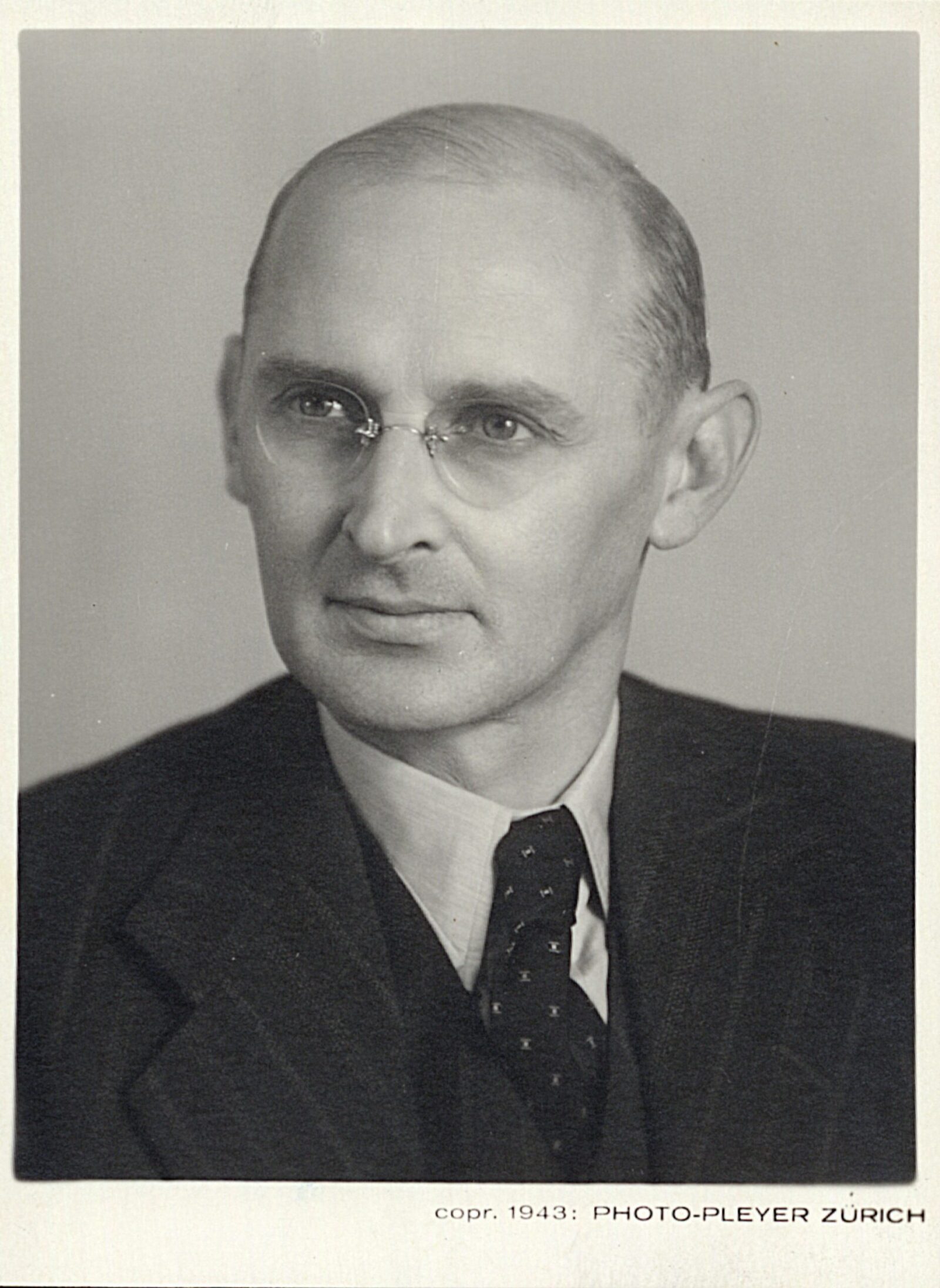Science and practice for food security
How the “cultivation battle” helped shape training for agronomists
Friedrich Traugott Wahlen studied and obtained his doctorate at ETH Zurich. Under his leadership, the “cultivation battle” to increase domestic food production during the Second World War was planned and implemented. As a Professor of Crop Production, Deputy Director-General of the Food and Agriculture Organization (FAO) and Federal Councillor, he combined scientific expertise with political and social power.

Never is the social role of agriculture more evident than in times of crisis. With the onset of the Second World War, the Confederation sought to ensure food self-sufficiency by increasing yields and expanding agricultural production. The “cultivation battle” designed and implemented by Friedrich Traugott Wahlen attempted to use all available and suitable agricultural land, means of production and labour for the expansion of arable farming. Together with a sparing use of stocks, this should ensure that Switzerland would be able to supply itself even if food imports were to decline.
At that time, Friedrich Traugott Wahlen was Director of the Zurich-Oerlikon Agricultural Research Station, today’s Agroscope site at Reckenholz, and Head of the Agricultural Production section in the War Nutrition Office. He had acquired his agronomic know-how first at the Rütti Agricultural School and, from 1917 onwards, in his studies of agronomy at ETH. After his dissertation on the overwintering of perennial legumes, which he also completed at ETH in 1922, he worked and researched at agricultural experimental stations in Germany, England, the Netherlands and Canada.
Self-sufficiency and symbolism
The implementation of the “cultivation battle” was an extraordinary achievement in that during the war years from 1940 to 1945 the arable land in Switzerland was expanded by 158,000 ha. This corresponded to an increase of 77%. The logic behind this was that arable products such as vegetables, potatoes and cereals directly serve human nutrition and at that time could provide ten times more calories per hectare than dairy or meat products. Self-sufficiency, i.e. the share of domestic production in food consumption, thus increased from 52% gross to just over 70%. However, the average calorie consumption dropped during the war years and was 2,100 kcal per person before the end of the war. Measured against consumption before the war, self-sufficiency therefore increased by only about 7% net to 59% of actual demand.
In addition to this increased cultivation, the “cultivation battle” also had important symbolic power. Based on well-organised propaganda, the “cultivation battle” also represented Switzerland’s will to resist and assert itself. The production of food was equated with the fight for the fatherland and independence. The symbol of the “cultivation battle” then also had a strong impact on agricultural policy in the post-war years. It formed the backbone of an agricultural economy oriented towards production and security goals. This way of thinking and acting also shaped training for agronomists at ETH in the middle of the last century.
From the table to the mathematical model
In research, cultivation planning found its continuation within the framework of Swiss nutrition planning. With the advent of the computer, mathematical programming models were developed in the 1960s that allowed for a multi-year agricultural production and storage plan to ensure the nutrition of the Swiss population. However, the development of the foundations for Swiss nutrition planning did not remain at ETH for long. The mathematical models and the corresponding federal mandates “migrated” with the people who knew and developed the models – from ETH to the University of Fribourg and meanwhile back to their origin, to Agroscope, the federal agricultural research institute.
Professor, Director, Federal Councillor
Friedrich Traugott Wahlen remained a man of important functions after the war. During the Second World War, he became Professor of Crop Production at ETH Zurich (1943–1949) and then Director of the Agriculture division of the FAO. This function took him to Washington and then also to Rome, where he was also Vice-Director of the FAO at the end of the 1950s. However, his charisma went far beyond agriculture. He also entered politics in 1942 as a member of the Council of States and finally became a Federal Councillor in 1959. He took over the Department of Justice and Police and, in the course of his career, also headed the Department of Economic Affairs and the Federal Political Department.